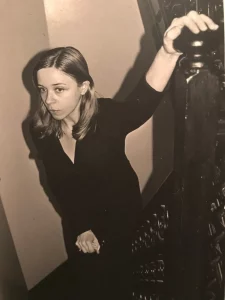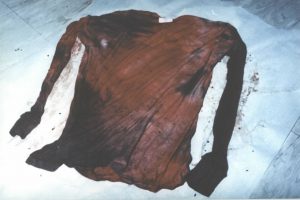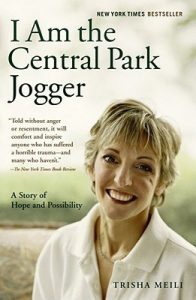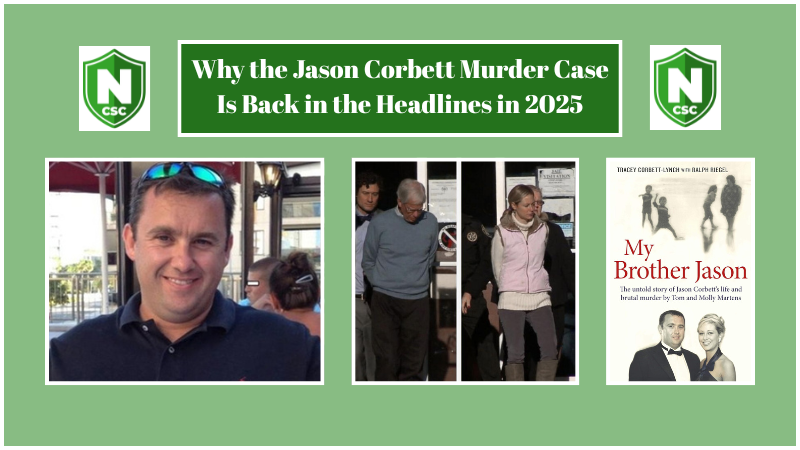The Central Park Jogger (1989)

New York City’s reputation for apathy and crime began in the 1960s with the Kitty Genovese murder. It continued to escalate through the 70s and 80s til it hit an all time high in the late 1980s, especially violent crime. Murders in the city had hit its peak of 2,245 in 1990 with a total of thousands murdered over the last ten years. The culprit was largely due to the crack cocaine epidemic, which hit many urban American cities hard (and NYC the worst). The incidents of rape, assault, and robbery were also very high, and the city had earned a reputation for instilling fear by the 1990s.
The Central Park Jogger case was one of the many violent attacks that had emerged as a result of the violence. The jogger, 29 year old Patricia “Trisha” Meili, was brutally assaulted and raped in New York City’s Central Park at night. She managed to survive despite sustaining near fatal wounds which included a severely fractured skull, brain damage, hemorrhagic shock, and a coma that she was in for 12 days.
Her case left a harrowing mark on the world, and it only resulted in further trauma as five juvenile males of color were wrongfully convicted of her assault. It took over a decade for the rightful perpetrator to be found and for the wrongful convictions to be completely vacated. The story of Trisha’s assault has since been overshadowed by the national interest in wrongful convictions, however, it is still very much an important aspect of the story.
What Happened to Trisha Meili?

A photo of young Trisha Meili.
Patricia “Trisha” Meili, was a 29-year-old investment banker who regularly went on a jog around Central Park around 9:00 pm. However, while she was jogging on April 19th, 1989, she was violently knocked down and dragged 300 feet off the roadway, out of sight. Her body was found four hours later at around 1:30 am, naked, gagged, tied, and covered in mud and blood. She was left in a shallow ravine not too far from a wooded area in Central Park.
Trisha managed to survive but was found in a coma that she did not recover from for 12 days after her assault. She had sustained near-fatal wounds, including a severe skull fracture that dislodged her left eye from her socket. Her left eye socket had been fractured in 21 places. She managed to survive these wounds, in addition to severe hypothermia, severe brain damage, severe hemorrhagic shock, internal bleeding, and 75-80% loss of blood. She had severe amnesia and could not remember the hours leading up to the event, nor the weeks following the attack. For this reason, Meili was not cross-examined during the trial.
The New York Times referred to the incident as “one of the most widely publicized crimes of the 1980s”.
Initial Suspects and Confessions
Initially, the five who confessed to the crime—Antron McCray, Kevin Richardson, Yusef Salaam, Raymond Santana, and Korey Wise—became known as the Central Park Five. The group was later called the Exonerated Five in 2002 after the convictions were overturned. Indeed, the confession of convicted murderer and serial rapist Matias Reyes revealed that the five had been wrongfully convicted. The case has become one of the most widely known examples of a miscarriage of justice in the United States.
At the time of the investigation, the quintet were all minors–the oldest being 16. They had been associated with the crime by other youths that had claimed they were present when Trisha had been attacked. The five confessed to the crime after being aggressively interrogated for seven hours by the police in custody. Interestingly, the police taped their confessions without the aggressive seven-hour-long interrogation preceding it. Later, the group retracted their confessions, claiming that law enforcement had intimidated, manipulated, and coerced them into confessing to the crimes. Despite the DNA evidence turning up “inconclusive” with the suspected five, the five were convicted anyway.
Foul play was evident from the beginning. Prior to the seven-hour questioning, one of the oldest convicted suspects, 16-year-old Salaam, was asked to present proof of his age to the detectives. In New York, minors under 16 years of age must be accompanied by their parents to be questioned while in custody. Salaam’s parents had initially arrived with him at the station, insisting that she wanted a lawyer for her son. At the mention of a lawyer, police halted questioning, suspiciously.
Despite the lack of physical evidence linking the boys to the crimes, the mention of all the tactics used by the police, and the violation of their Miranda rights, the jury favored the prosecution. The five were convicted and sentenced to the maximum amount of time allowed for juveniles in a local facility. The oldest, Korey Wise, was sentenced to 5-15 years in prison, but only completed 12 before the real perpetrator was convicted.
The Real Perpetrator: Matias Reyes
Matias Reyes was 17 years old at the time of the incident. He had been living in a van at the corner of Third Avenue and 102nd Street and working at the local East Harlem convenience store. Reyes had confessed to the crimes, as well as his intention to later burglarize Trisha Meili’s apartment after the attack.
The confession had come about after Reyes visited one of the convicted suspects, Korey Wise, at the Auburn Correctional Facility in upstate New York. Reyes told one of the officers that he had attacked and raped the jogger. He also admitted that he had raped another woman in a nearby area a few days prior. He got away with it for so long because the NYPD did not have advanced forensic technology and a DNA database until 1994.

The real crime scene photo of Trisha Meili’s shirt.
Indeed, Reyes’ DNA matched the DNA of the semen found on Meili and later rape victims as well. Additionally, the way Reyes’ had tied up Meili with her t-shirt was distinctive of the way he had left his other victims.
Reyes was not one of the twenty suspects that the NYPD had initially taken into custody. It’s not clear if Reyes would have ever been caught had he not confessed to his crimes in 2001. His reasoning for admitting to the crimes was because “it was the right thing to do” however, it’s more likely that he had done so after the statute of limitations had passed in New York. This meant that Matias was never charged with his crimes because the maximum time to initiate legal proceedings for the crimes had passed.
The Aftermath
In 2002, the Central Park Five were vacated from prison. Only Korey Wise still lives in New York, founding the Korey Wise Innocence Project through the Colorado Law School in 2015. One moved to New Jersey after getting his high school diploma from the Bronx Prep Academy in 2017. Three others moved to Georgia, including Salaam and Raymond Santana. Salaam is a public speaker and published author, now married with 10 children. Santana now has one teenage daughter and has since founded the successful apparel company Park Madison NYC.
All five sued the state in 2003 for wrongful convictions. They claimed the prosecution had coerced them into confessing to crimes that they had not committed, and sued for malicious prosecution, emotional distress, and racial discrimination. Indeed, the large amount of news coverage that covered the Central Park Five depicted them as barbaric, bloodthirsty animals, complete savages that couldn’t possibly be human.
“[teens hailed] from a world of crack, welfare, guns, with no fathers… to smash, hurt, rob, stomp, rape. The enemies were rich. The enemies were white.” –The New York Times
The case was eventually settled in 2014, with New York City paying them a combined total of $41 million in damages. The money was divided among the five men, helping to compensate them for the years they spent wrongfully imprisoned.
Healing for Trisha Meili
Trisha Meili’s initial prognosis was that she would die of her injuries or remain in her coma. At the hospital, Meili was given last rites. When Meili did come out of the coma, she was treated at several different hospitals before finally entering a physical rehabilitation facility.
It was thought that Meili would never walk, talk, or read again, however, within four months Meili had regained her ability to walk. She even returned to work in December of that year, only eight months following the attacks.
Trisha was able to make a full recovery and in 2003 opened up about her identity, which she had been kept secret from the public for her protection. She has since published a book, I Am the Central Park Jogger: A Story of Hope and Possibility, and gained notoriety as a public speaker. She also works with sexual assault and trauma victims at the Mount Sinai Hospital in Mount Sinai, Long Island, New York.
Trisha returned to jogging daily roughly four months after the attack. Today, she also participates in yoga. However, she claims to struggle with some memory loss as a result of the assault.




